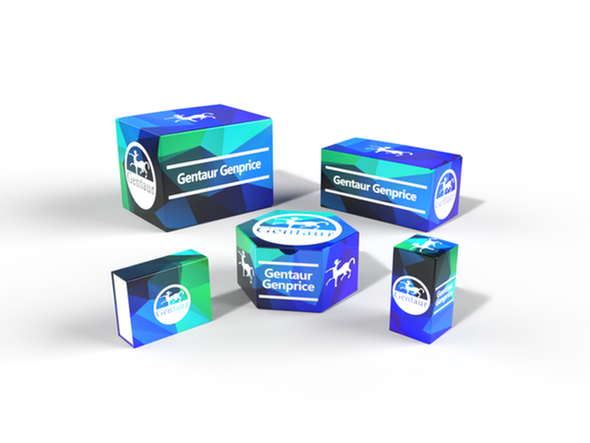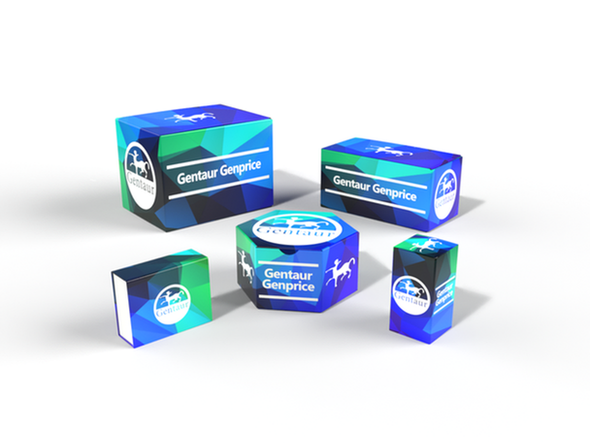Description
Monkeypox Virus Antigen Test (Colloidal Gold) | GEN-MPV-03
Intended Use
Monkeypox Virus Antigen Test (Colloidal Gold) is intended for the In Vitro qualitative detection of Monkeypox Virus (MPV) antigen in human serum or plasma as an aid in the diagnosis of MPV infections in conjunction with other laboratory and clinical findings.This product can be used in a clinical setting/health-care setting/laboratory setting.
Summary and Explanation
Monkeypox is a viral zoonosis (a virus transmitted to humans from animals) with symptoms very similar to those seen in the past in smallpox patients, although it is clinically less severe. With the eradication of smallpox in 1980 and subsequent cessation of smallpox vaccination, monkeypox has emerged as the most important orthopoxvirus for public health.
Monkeypox primarily occurs in Central and West Africa, often in proximity to tropical rainforests and has been increasingly appearing in urban areas. Animal hosts include a range of rodents and non-human primates.Monkeypox virus is an enveloped double-stranded DNA virus that belongs to the Orthopoxvirus genus of the Poxviridae family. After a person is infected with MPV for the first time, the body's immune system will carry out immune defense against the virus and produce specific antibodies, and IgM antibodies will be produced in the body of acute infection 3~7, which mainly exist in the acute infection period. A few days later, IgG antibodies began to appear and increase, and the presence in the body was longer than that of IgM antibodies, with better affinity, suggesting the presence of previous infection.
Principles of the Procedure
Monkeypox Virus Antigen Test (Colloidal Gold) is an immunochromatographic membrane assay that uses highly sensitive monoclonal antibodies to MPV.
The test strip is composed of the following three parts, namely sample pad, reagent pad and reaction membrane. The reagent membrane contains the colloidal-gold conjugated with the monoclonal antibodies against MPV; the reaction membrane contains the secondary antibodies for MPV, and the polyclonal antibodies against the mouse globulin, which are pre-immobilized on the membrane. When the specimen is received by the test, the conjugated solution from the reagent pad gets dissolved and migrates along with the specimen. When the MPV is present in the specimen, a complex is formed between the anti-MPV conjugate and the virus will be caught / detected by the specific anti- MPV monoclonal coated on the T region. Whether the specimen contains the virus or not, the solution continues to migrate to encounter another reagent (an anti-mouse IgG antibody) that binds the remaining conjugates, thereby producing a red line on the region C.
Reagents
The reagent membrane contains the colloidal-gold conjugated with the monoclonal antibodies against MPV; the reaction membrane contains the secondary antibodies for MPV, and the polyclonal antibodies against the mouse globulin, which are pre-immobilized on the membrane.
Materials Supplied
- Test Device
- Diluent
- Plastic dropper
- Color card
Additional Materials Required
- Timer
- Cotton swab
- Biohazard container
Storage Instructions
Store the Monkeypox Virus Antigen Test (Colloidal Gold) at room temperature or refrigerated (2-30°C). Do not freeze. All reagents are stable until the expiration dates marked on the outer packaging and buffer vial. Specimen Collection and Preparation
1. Specimen collection:
Human serum and plasma collection should be carried out in a professional laboratory by standard protocol (sodium citrate anticoagulant, heparin anticoagulant or EDTA anticoagulant).
2. Specimen preparation:
- When an immediately detection is not available, transport and store the specimens under low temperature conditions. Serum and plasma specimens can be stored at 2°C~8°C for 7 days or at -10°C~-25°C for 6 months, and the freeze-thaw cycles should be no more than 3 times;
- Equilibrate the specimens stored at low temperature to ambient temperature (15°C~25°C) before testing.
- Specimens of severe icterus, hemolysis, lipemia and contamination may result in incorrect results Assay Procedure Please read this manual carefully before use. Please follow the procedures below.
For serum or plasma:
- Tear off the seal of aluminum foil bag and carefully take out the test card.
- Transfer 1 drop (about 10μL) of serum or plasma with thedisposable plasticdropper into the sample well of the test card.
- Add 2 drop of the diluent, and leave it at ambient temperature. Start the timer. Interpret the result within 10~15 minutes. Do not read the result after 15 minutes.
Interpretation of Test Results
- POSITIVE (+): Two distinct colored line appears. One line in the control line region and the other line in the test line region. The shade of color may vary , but it should be considered positive whenever there is even a faint line.
- NEGATIVE (-): Only one colored line appears in the control line region, and no colored line appears in the test line region. The negative result indicates that there are no MPV particles in the specimen or the number of viral particles is below the detectable range.
- INVALID: The Control line (C line) fails to appear. The test is invalid even if a colored line appears in the test line region. Insufficient specimen volume or incorrect procedural
techniques are the most likely reasons for control line failure. Review the test procedure and repeat the test using a new test device. If the problem persists, discontinue using the
product immediately and contact your local distributor.

Limitations
- This product is an acute-phase screening test for qualitative detection. Specimen collected may contain antigen concentration below the reagent’s sensitivity threshold, so a negative test result does not exclude infection with MPV.
- This product detects viable and non-viable MPV antigen. Test performance depends on antigen load in the specimen and may not correlate with cell culture performed on the
same specimen. A positive test does not rule out the possibility that other pathogens may be present, therefore, the results must be compared with all other available clinical and laboratory information to make an accurate diagnosis. - A negative test result may occur if the level of extracted antigen in a specimen is below the sensitivity of the test or if poor quality specimen is obtained.
- Performance of the test has not been established for monitoring antiviral treatment of MPV.
- Positive test results do not rule out co-infections with other pathogens.
- A negative result may occur if the concentration of antigen in a specimen is below the detection limit of the test or if the specimen was collected or transported improperly, therefore a negative test result does not eliminate the possibility of MPV infection, and should be confirmed by viral culture or PCR.
- False negative results may result from wrong specimen collection.
Performance Characteristics
1. Sensitivity
Detection of manufacturer’s sensitivity reference materials, the results are as follows:
S1 and S2 should be positive, S3 should be negative.
2. Negative coincidence rate
Detection of manufacturer’s negative reference materials, the results are as follows:
Negative coincidence rate (-/-) is no less than 10/10.
3. Positive coincidence rate
Detection of manufacturer’s positive reference materials, the results are as follows:
Positive coincidence rate (+/+) is no less than 10/10.
4. Repeatability
Detection of manufacturer’s repeatability reference material in parallel for 10 times. The intensity of the test lines should be consistent in color.
5. High Dose Hook Effect
Test the high dose specimen, the result should be positive.
Warnings and Precautions
- This product is only for in vitro diagnosis, not for any other purposes.
- Do not use after the expiration date.
- Perform test at room temperature 15 to 30°C.
- Ensure foil pouch containing test device is not damaged before opening for use.
- Wear gloves when taking the specimens, avoid touching the reagent membrane and sample window.
- Avoid using bloody specimens. All specimens and used accessories should be treated as
infectious and discarded according to local regulations.






